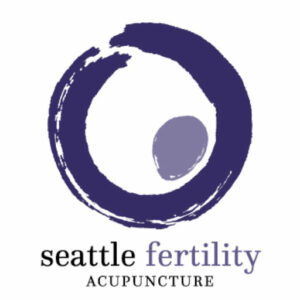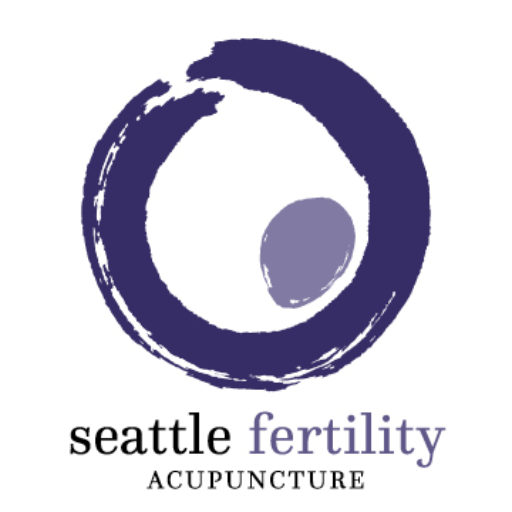Toshio Ohshiro, MD PhD
Abstract
Background and Aims: The rapidly graying population in Japan is being compounded by the rapidly-dropping birth rate. The latter is mostly due to the later ages at which women are giving birth as the marriage age has also been increasing. Giving birth at a later stage is associated with problems for both mother and child, but for older would-be mothers the greatest problem is infertility, sometimes severe. The present article will show how the application of low level laser therapy (LLLT) is a potentially effective treatment for severe infertility.
Subjects and Methods: Seventy-four females (average age 39.28 yr) with severe infertility in whom assisted reproductive technology (ART) had been unsuccessful (average of 9.13 yr) participated in the first part of a study from October 1996 — April 2000. LLLT was applied (830 nm, CW, GaAlAs 60 mW diode LLLT) in Ohshiro’s proximal priority technique (average 21.08 sessions) with or without other ART approaches. Based on successful outcomes, the study was then extended to March 2012, amassing a final total of 701 patients.
Results: Pregnancy was achieved in the first part of the trial in 16 patients (21.7% of 74) of whom 11 (68%) achieved successful live delivery. In the extended trial, pregnancy was achieved in 156 (22.3% of 701) with 79 live deliveries (50.1%).
Conclusions: The use of 830 nm LLLT in the proximal priority technique at the parameters used in the present study, on its own or as an adjunct to other techniques, resulted in successful induction of pregnancy in just over 21% of severely infertile females, with a substantial number of these achieving live births. No adverse events were noted in any patient. LLLT is a pain-free and sideeffect free modality which could give hope to the increasing numbers of older females with infertility in Japan and potentially worldwide. Multinational studies are warranted.
Introduction
Japan is rapidly advancing in its recognition internationally as one of the fastest-growing ‘graying societies’, with 23.1% of the population in 2010 being 65 years of age or older (Japan Ministry of Internal Affairs and Communications, Statistics Bureau), 1) and this population subgroup is projected to be just under 40% of the total population in 2050. Conversely, and perhaps more worryingly, the percentage of the population 12 years of age or under in 2010 was 13.2%, has been projected to drop to 8.6% in 2050. There are several reasons for these sobering statistics. The increasing number of members of the graying society is due to better health care, such as advances in treatment techniques and developments in screening for cancer and other diseases which are being caught earlier and therefore exhibiting a higher cure rate, and improved self-awareness of the importance of maintaining health among the population in their younger- and middleages. On the other hand, the declining birth rate is due to changes in the way in which marriage is perceived amongst young women, and in particular the age at which the first childbirth occurs. Women in Japan currently do not place such a high importance on marrying young, so the age for marriage is increasing (24.2 yr in 1950 and 28.8 yr in 2010 – Japan Ministry of Health Labour and Welfare). 2) This leads inevitably an increase in the age at which the first child is born. The mean age of bearing the first child has increased from 25.6 in 1970 to 29.9 in 2010 (Table 1). Most of this rise is accounted for by greater numbers of childbirths to mothers who are in their 30’s and 40’s (23.2 – 59.7%) compensated for with a drop amongst mothers in their 20’s (75.7 – 39.0%) when comparing figures from 1970 to 2010. Furthermore there has been a staggering 48% drop in the number of children born, down to 1,017,000 from 1,934,000 for the same years. 2)
It is a biological fact and of increasing medicoscientific concern that, the older a woman becomes, the more problems she and her child are likely to face in actual childbirth. 3) In addition, taking the rising age together with the increased stress of daily living for women living and working in Japan, rising infertility rates have also contributed to the drop in the birth rate mentioned above. The average number of children per mother in Japan has dipped from 1.36 (2000) to a record low of 1.26 (2005). 2) We have to ask what can be done about this serious problem, not just from the point of view of would-be mothers, but also from the necessity of having a stronger, younger pool of workers in the future to support the graying population.
Subjects and Methods
Discovery of LLLT for female infertility
Philip James Bailey (English poet, 1816 – 1902) wrote, “What men call accident is God’s own part”. Some 17 years ago in 1995, the author was treating a 55-yearold menopausal female patient in his pain clinic for severe lower back pain. After a few sessions, her back pain was successfully removed, but she returned later to the clinic complaining of vaginal bleeding: she was followed for a week, and it stopped spontaneously. Four weeks later, the bleeding had started again but stopped after a week or so, and this continued for succeeding months. In fact, the patient had incidentally been brought out of menopause by the LLLT sessions or her lower back pain. Exactly the same phenomenon subsequently occurred in another female patient attending the author’s pain clinic. In the course of a laser meeting in 1996, the author recounted these experiences to Dr Masato Inoue, the then President of the Ob-Gyn Department of Sanno Hospital, a major hospital in Tokyo. Dr. Inoue suggested that we should use LLLT to treat female infertility patients. We therefore designed and executed the clinical trial, described in the following Subjects subsection. Dr Inoue was rather interested in the author’s findings, but challenged the author to show him one successful birth following LLLT for infertility in 100 cases, and then Dr Inoue would believe that LLLT had a real role to play in helping with female infertility.
Subjects
The author set up a clinical trial to test the efficacy of LLLT for infertility in 1996, (Table 2), and by 2000 he had amassed 74 severe infertility patients, with an average age of 39.28 yr who had been infertile for an average of 9.13 yr, and had had on average 15.26 assisted reproductive technology (ART) sessions before having LLLT. The trial was subsequently extended to 2012 with an increase in the preliminary trial subjects to 701 women with severe infertility (26 – 52 yr, average age 39.34). They had been infertile for an average of 4.12 yr during which they had received 8.43 ART sessions.
LLLT Methodology
All patients in both the preliminary and extended trial were treated with LLLT in the contact mode using a GaAlAs diode laser (OhLase-3D1, JMLL, Tokyo, Japan) delivering 60 mW in continuous wave at a nominal 830 nm. The incident irradiance was 1.2 W/cm2, and the irradiation time per point was 15 s giving a fluence of 18 J/cm2/point. Patients were treated in the author’s proximal priority technique (PPT), 4) whereby LLLT is applied bilaterally with light pressure of the treatment probe against the tissue, to points on the neck. This is accompanied with some gentle manipulation of the head and neck muscles to improve penetration to the target blood vessels. The PPT proved effective in a previous report on treatment of female infertility 5) and was also shown to be more effective than direct irradiation in the previous LLLT technique for hypertrophic and keloid scars. 6) Patients in the preliminary trial received an average of 21.08 LLLT treatments. Where possible, patients attended twice per week, but if this was not practical they were treated weekly, or once per 2 weeks, depending on their individual situation. In the extended trial, the average number of sessions was 12.49 with the same inter-session interval. The current range of treatments in the author’s clinic is from 11 to 14.
Results
Of the 74 subjects in the preliminary trial (Table 2), 16 (21.7%) patients successfully became pregnant, resulting in 11 successful live births (13 deliveries, 5 boys and 8 girls), representing 14.9% of the total number of patients and 68.8% of those who became pregnant. Of the 16 patients who attained pregnancy, the pregnancy occurred without any other treatment except LLLT in 1 patient, together with in vitro fertilization (IVF) in 10, in 3 by artificial insemination by husband (AIH) or donor (AID) plus LLLT, and in 2 by gamete intrafallopian transfer (GIFT) plus LLLT. As Dr Ohshiro had successfully shown a better than 21% success rate using LLLT in severely infertile women, Dr Shuetsu Suzuki, Representative of Reproductive Biology Tokyo Symposium encouraged him to form the Japan Society for Laser Reproduction (JaSLaR). The first meeting was successfully held on April 2nd, 2006, and has been held annually since then culminating in the 7th JaSLaR Congress, held earlier this year.
At the end of the extended trial of the 701 patient, 156 (22.3%) became pregnant, interestingly the same percentage as in the first stage of the trial, resulting in 79 deliveries, 50.1% of those who became pregnant, resulting in 87(12.4%) laser babies (as they are now known), 51 boys and 36 girls. (Table 3) Of the 156 pregnancies, 34 achieved natural pregnancy with LLLT alone, and LLLT was combined with IVF in 105, AIH/AID in 13, GIFT in 3 and zygote intrafallopian transfer (ZIFT) in 1.
Discussion
LLLT for women with severe infertility has been shown to have what is really surprising success with a pregnancy rate of 21.7% after at least 4 years of failure with other ART methods, and a successful birth rate in over half of those pregnancies. Although the average number of LLLT sessions was almost one half in the later trial compared with the first part (14.02 compared with 21.08), the pregnancy rate was raised from 21.7% to 22.3%. This could suggest an improved understanding of how best to apply LLLT for infertility, since the sys¬tem used throughout the term of the trials has remained the same until the present. The shorter time lag between onset of infertility and the first LLLT treat¬ment session compared between the different stages in the study (9.13 yr in the preliminary study and 4.67 yr in the extended study) might be explained by the greater acceptance of LLLT among the general public, and also the higher rate of referrals from Ob-Gyn and infertility clinics.
We must therefore briefly consider why LLLT with proximal priority has had this consistent result in severely infertile women assessed over the12 year peri¬od in the above trials, and has continued to do so until the present. 7) The proximal priority technique has already been introduced and discussed in previous reports, 4–7) and is the subject for an extended study in a forthcoming issue of the journal. The theory will therefore not be examined in detail herein, as it is beyond the scope of the current article.
There is one aspect of LLLT which has been con-sistently demonstrated , particularly with the wavelength of 830 nm which is the wavelength of choice in the author’s approach to creating ‘laser babies’, and that is the significant effect of LLLT on local and systemic blood flow rate and volume. Controlled studies have shown that abnormal blood flow increases post LLLT, as does even normal blood flow as measured with singe vessel and laser speckle Doppler flowmetry, and remains elevated for sone hours. 8, 9)
In the case of abnormal blood flow, such as in Buerger’s disease (thromboangiitis obliterans), LLLT-mediated neovascularization restored blood supply to extremities which were destined for amputation, 10)and LLLT with 830 nm can save failing grafts and flaps. 11,12) When this phenomenon is combined with the author’s proximal priority technique, developed over the past two-and-a-half decades since its first published appearance in 1988, 13) we have one of the main potential reasons behind the success of LLLT for women with severe infertility which has not responded to any other approach, namely enhanced and improved systemic blood flow. Briefly, the author postulated that treatment with LLLT should always be carried out proximal to distal, with the brain and its blood supply being the most proximal point in the organism. This formed the author’s original ‘mother computer’ concept. 13) The concept is now very well refined and will feature in a forthcoming article in the next issue of this journal, so no further details will be given here.
An example of the physical efficacy of LLLT is shown, however, in Figure 1. This shows a series of fine plate full-body thermographs of a typical example of one of the author’s infertility patients. In the first set of thermographs, showing the subject taken from the front and the rear before any LLLT, a typically cold region is noted over the abdomen, lumbar area and lower extremities, indicating restricted blood flow in this zone, including the ovaries and the uterus. After one single LLLT session using the new proximal priority technique, whereby LLLT is applied only to the neck area of the patient with some gentle manipulation of the muscles to improve penetration to the target blood vessels, warmth can be seen spreading down the truck and the back in the middle set of images: this warmth represents an improved blood flow to these areas, In the lowest set of images, after 5 sequential LLLT sessions, a dramatic change can be seen with whole body warming.

The potential importance of this improved systemic blood flow on improving the chances of an infertile subject to become pregnant was well argued by Dr. Yuki Taniguchi and colleagues in an earlier issue of Laser Therapy. 7) Blood is one of our biological superhighways, and when we can enrich and improve the blood supply to area where it has been deficient, the effects of the enhanced supply of oxygen, nutrients and LLLT-mediated cytokines are clearly seen. There is now doubt that the methods embodied in ART alone are a powerful aid to improve infertility, but when LLLT is combined with ART, the results are much improved, especially in the older age groups. Table 4 shows a comparison between the pregnancy rate achieved in infertile females with ART and ART plus LLLT. In general, the older the patient, the more effective the combination becomes in encouraging pregnancies, with over three times the success rate seen in the 40 years and over group.
Finally, we must not forget the psychosomatic influence of LLLT on the overall wellbeing of ladies undergoing LLLT in the hopes of becoming pregnant, in an addition to the physiological improvements. The author conducted a questionnaire survey in 27 patients after their treatment course had finished (unreported study), and 26 of the questionnaire items were concerned with not only general well-being and autoimmunity-related concepts, but specific fertility-related clinical items. Table 5 shows the impressive results, with one of the highest scoring items being improve¬ment of the quality of the ovarian follicles.
Overview of JaSLaR Meetings
The Japan Society for Laser Reproduction was formed as a direct result of the author’s earlier suc¬cess, and Table 6 gives an overview of all JaSLaR meetings, with a breakdown by type of paper. The programs may be viewed in full on the JMLL website (http://www.jaslar.jp). After the first meeting, which was the inaugural meeting and therefore by way of a trial run, the agenda of the JaSLaR congress has evolved to follow more or less the same pattern. The congress always started with the CEO lecture, which was followed by the Presidential Lecture. Then came the Invited and Special Lectures (if any), and after that the Tutorial Lectures. A session of presentations under the heading ‘LLLT’ was next, with the ‘Laser-Assisted Hatching’ session following this. The lunch break was sometimes accompanied by the Luncheon Seminar, and the afternoon session consisted of hands-on demonstrations usually by the author. The congress has been a true full-day affair, with around 14 presentations per meeting in addition to the hands-on session, and has been universally well-received with increasingly large numbers of attendees echoing the interest of the Ob-Gyn community in LLLT for severe female infertility, and the 2013 congress is widely anticipated.
Conclusions
One thing is abundantly clear: with a successful pregnancy rate of just over 22% in female patients with severe infertility problems and a failure rate with other approaches of ART from 5 to 9 years, LLLT as applied in the author’s clinic with the proximal priority technique can no longer be regarded as some form of ‘black magic’, but must be allowed to take its place as a valued tool among the armamentarium of the fertility clinic. The continued and sustained excellent results being achieved by the author and others using his technique at different institutions further confirms the validity of this pain-free, easily applied and side-effect free approach. The increased membership of JaSLaR points to the number of Ob-GYN practitioners who are realizing that LLLT can provide an answer at least to some of their patients. We look very much to LLLT to ease the sad lot of severely infertile women even more in the future with further multinational trials to assess the results in patients in countries other than Japan.



